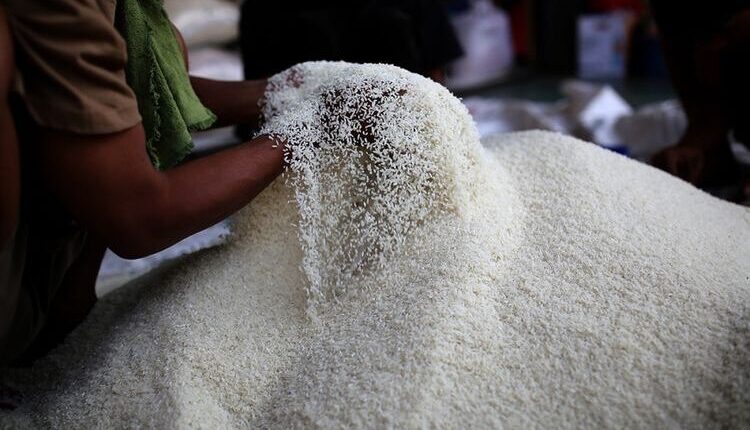The Government’s commitment to maintain rice stocks and price stability is worthy of appreciation
Currently, the Government has issued a policy to meet rice reserves (stocks) through a policy of importing 400,000 tons of rice from Vietnam and Thailand, and 250,000 tons from Cambodia. This import is carried out not only to maintain stocks, but also to keep the price of rice stable on the market.
This stock emergency has the potential to occur due to a decline in rice production, high prices of grain and rice, critical sources of irrigation water, and the postponement of the first planting season. In this case, the Government must be prepared to face the worst possibility.
The World Food and Agriculture Organization (FAO) noted that the global rice price index had touched 142.4 points in August 2023, which means it had reached the highest record shortage in the last 15 years. This shortage has the potential to increase in the near future if several countries in the world, such as India, ban rice exports to meet domestic needs. Meanwhile, several other countries have also given signals that they will take similar steps.
Meanwhile, domestically the price of rice has started to increase since July 2022 due to the long drought, the El Nino phenomenon which is expected to last until 2024 and an increase in fertilizer prices due to the war between Russia and Ukraine.
Several provinces are currently experiencing drought in rice fields due to the long dry season, including Aceh, North Sumatra, Riau, Riau Islands, NTT, NTB and Papua. Meanwhile, other provinces are experiencing low levels of drought. This of course resulted in the price of premium rice increasing in January 2023 from IDR 13,140/kg to IDR 14,230/kg in September 2023. Meanwhile, medium rice increased from IDR 11,550/kg in January 2024 to IDR 12,580/kg in September 2023 .
This increase in rice prices has contributed 0.41 percent of the 0.92 percent of the food, beverage and tobacco group which contributed to 3.7 percent of the annual inflation rate in August 2023.
Secretary of Perum Bulog, Awaludin Iqbal, said that his party is confident that the import target of 1.2 million tons of CBP by the end of 2023 will be met and can distribute 630,000 tons of rice social assistance packages to 23.5 million Beneficiary Families (KPM) in stages.
This import policy is the right choice that must be made in the last three months of 2023 by the Government because it predicts that rice production will be lower than consumption at the end of the year.
Awaludin added that imported rice has now been distributed to markets to intervene in rice prices by prioritizing the national movement to handle El Nino, distributing SPHP rice (Supply and Market Price Stabilization), as well as rice food aid during September, October and November.
The national movement to handle the impact of El Nino is the Government’s manifestation of increasing the planting area of 500,000 hectares in 10 Provinces and 100 Regencies which will begin to be planted in August-September 2023. Apart from that, this movement coordinates the implementation of handling the impact of El Nino, mapping and collecting data on prospective farmers, providing irrigation sources, distribution of seeds and fertilizer, insurance and financing assistance, organism control and drought management, as well as harvest and post-harvest management.
Head of the National Food Agency (NFA), Arief Prasetyo, said that currently the Government is continuing to try to reduce the increase in rice prices, one of which is by pouring CBP into the Cipinang Rice Main Market and other traditional markets. Thanks to these efforts, the Government succeeded in reducing the price of medium type rice on 14-19 September 2023 from IDR 12,580/kg to IDR 12,256/kg. If necessary, phase II rice assistance will be rolled out by the Government. Apart from that, the additional supply of rice at the Cipinang Rice Main Market and other traditional markets will be increased.
On the other hand, the Government has other policy alternatives that can be used as a solution to reduce the volatility of rice price increases in the market, namely regularly evaluating and monitoring rice imports on a regular basis, optimizing the acceleration of rice import revenues from various countries for the benefit of supplying the Government’s rice reserves, carrying out import management that refers to applicable laws and regulations, as well as carrying out market operations directly with consumers and law enforcement officials in order to prioritize the principle of ultimum remedium in the supervision of rice trade systems. A prolonged rice polemic has the potential to give rise to more serious conflicts in the future, such as disrupted public services, inflation, increasing poverty rates, and disruption of security and social stability. Therefore, Currently, the government is taking various steps which are believed to be able to stabilize rice prices in the future. By using various mechanisms, it is hoped that the Government can also convince the public that rice stocks in Indonesia are sufficient until 2024 so that the issue of this commodity is not vulnerable to being politicized in the middle of a political year.
